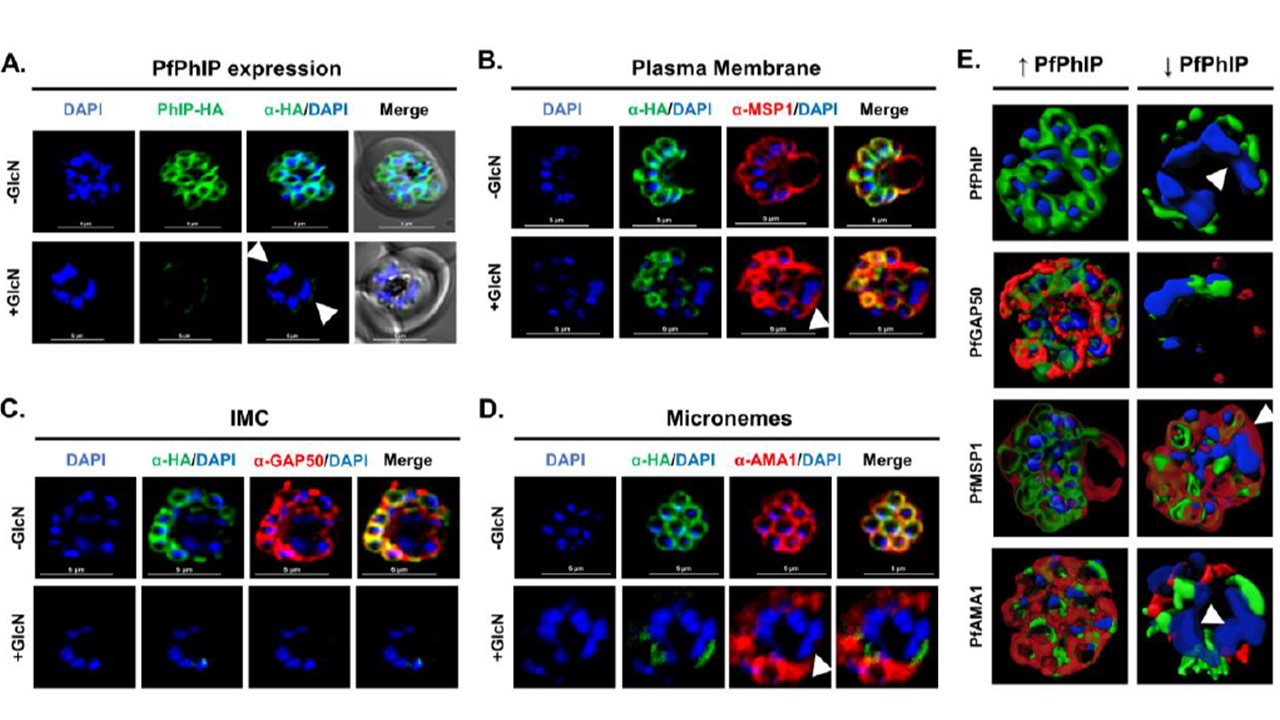PfPhIP deficient parasites show defects in segmentation of daughter cells: PfPhIP-HA-glmS parasites maintained with and without GlcN were E64-treated (10 μM) and probed with the anti-HA antibody (green) and counterstained with DAPI. (A) Apparent knockdown of PhIP expression leads to formation of agglomerates of unsegmented daughter nuclei. (B) Anti-GAP50 antibody (IMC marker) (red) showed defects in IMC formation in agglomerates. Merozoite plasma membrane and micronemes were stained with antibodies against P. falciparum (C) merozoite surface protein 1 (PfMSP1) (red) and (D) PfAMA1 (red), respectively, in E64-treated schizonts cultivated with and without GlcN. PfMSP1 was visible in schizonts but forms relatively larger rings that surround multiple nuclei in the agglomerates. PfAMA1 showed loss of signal in agglomerates. Scale bar = 5 μm. (E) 3D reconstruction of the PfPhIP-HA-glmS schizonts with and without GlcN is presented using Imaris 7.6.1. Arrowheads indicate agglomerates of unsegmented daughter nuclei.
Saini E, Sheokand PK, Sharma V, Agrawal P, Kaur I, Singh S, Mohmmed A, Malhotra P. Plasmodium falciparum PhIL1-associated complex plays an essential role in merozoite reorientation and invasion of host erythrocytes. PLoS Pathog. 2021 17(7):e1009750.
Other associated proteins
| PFID | Formal Annotation |
|---|---|
| PF3D7_0918000 | glideosome-associated protein 50 secreted acid phosphatase |
| PF3D7_0930300 | merozoite surface protein 1 |
| PF3D7_1133400 | apical membrane antigen 1 |
